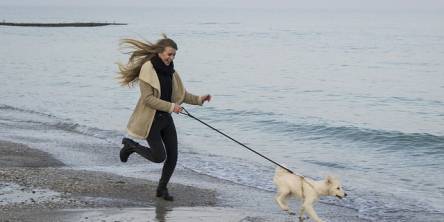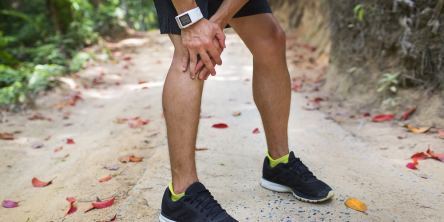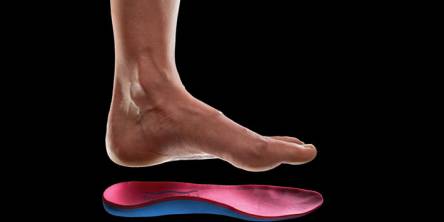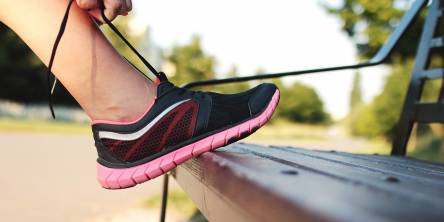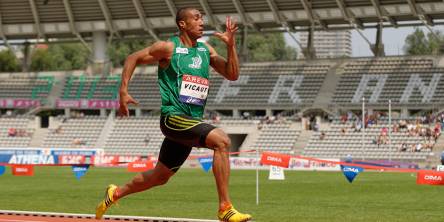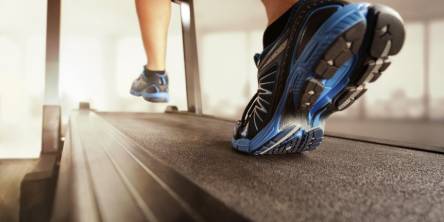The Key Muscles That Affect A Runner’s Speed
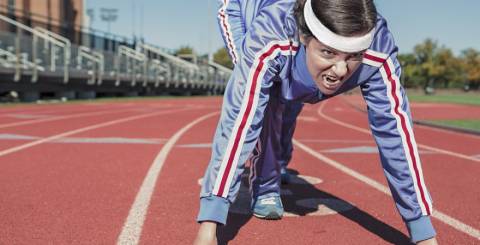
A runner's ability to run fast is heavily reliant on the state of his muscles, particularly the hip flexors. There are three major muscles in this region of the body - the psoas major, iliacus, and rectus femoris, and each one of them has a role to play in proper running. The first two muscles mentioned are attached to the hips and femur while the psoas is attached to the spine.
When these three muscles begin to contract, they bring your thigh and torso together to accommodate proper walking or running. For many athletes, particularly runners, stretching the hips is crucial as it counteracts muscle shortening and tightness.
Perhaps the most crucial aspect of keeping the hip flexors stretched and flexible is it allows you to proceed to the recovery phase quicker than usual. Since the leg movements, while running extends your hip, tight hip flexor muscles will restrict and limit your strides. As a result, your speed is diminished, and you risk lower back injuries.
Below are the key muscles that need fine-tuning to achieve optimal speed and stability in running.
Hip Flexors
There are two primary factors to consider when it comes to running distances; these are your stride length and stride rate. The stride length is the distance that your legs can leap over per stride whereas the stride rate is the number of strides you take at a given period of time.
Having tight hip flexors shortens your strides, reduces agility, and restricts your range of motion. As a result, your performance can significantly decrease.
Glutes
As crucial as the hip flexors are, gluteal muscles are also heavily influenced by tight hip flexors and can impair your hip extension. Aside from that, your glutes play a major role in aligning your knees. When your knees are aligned, you are more able to withstand your body weight on every leg impact.
Underdeveloped glutes can also lead to poor performance. When these muscles are not engaged with the other surrounding muscles, it causes excess stress on your lower back, tight hamstrings, poor pelvic posture, shin pain, and knee injuries. Next to hip flexors, maintaining the glutes should be a priority.
Hamstrings
Hamstrings make up the muscles behind your thighs, and they play a vital role in injury prevention. When the hamstrings are weak and tight, they throw off your balance and cause your knees to wobble. In the event that your back thighs cannot handle the muscular stress, it can disrupt your running form and increase the risk of injury.
Quadriceps
Quadriceps are made out of four muscles, and the rectus femoris (a major hip flexor muscle) is one of them. This tissue muscle plays a crucial role in swinging your legs and keeping them in motion while running.
When the quadriceps are tight, it can lead to postural problems, muscle imbalance, and hips, knees, and back pain. So make sure to stretch and strengthen, not just the rectus femoris but the entire quadriceps.
Calves
The calves are always going to suffer the most, especially when runners suddenly increase their training load. The volume, intensity, and frequency of running can ultimately lead to injury when they are underdeveloped. It is therefore noteworthy to build these muscles up to prepare them for the repetitive load of running. Exercises like leg calves-raising and rope jumping can help build their strength.
Abdominal Muscles
A fast runner should have a sturdy abdominal base. This means your hips and pelvis should be flexible and strong so that the force you exert while running goes to the specific areas where it is intended to go.
Running requires you to generate a propulsive force from your core to maintain speed. It is essential to have a sturdy base so that the force exerted by the abdominal muscles while running propels the body further and aiding longer stride lengths.
This is the reason why runners and athletes should work on their abdominal muscles to attain flexible and strong hips and pelvis. Neglecting the core will increase unwanted compensatory movements that can cause injuries over time.
Every after warming up and working out, you should stretch the leg muscles - most notably the hip flexors and the glutes, to keep them flexible. Doing so will also prevent muscle strains and injuries. Aside from adding strength training, eating a balanced diet can also make or break your performance.
If you are experiencing pain and discomfort, muscle strain is most likely the cause of it. You can take pain relievers that can be bought from your local pharmacy. Some athletes prefer to take natural remedies instead. But if the pain subsides for weeks to months, it is best to consult your doctor about it.
Similar Articles
Running with your dog can be a great way to get both you and your pet some exercise, but there are some things you should keep in mind before heading out the door to keep your canine companion happy.
Running is one of the best ways you can burn fat and calories. Not only that, but it's also an amazing way to get those happy hormones kicking in! After all, early morning runs get you in that relaxed zone, ready for work. However, it will require the proper training and running shoes to ensure that you're on the right track.
There's in no way like the sentiment of going for a run, however, did you realize that running insoles can encourage solace, execution and diminish the danger of basic running wounds? It doesn't make a difference on the off chance that you plan your run before anything else or crush them into your meal break.
Myths abound in the running world. As if selecting and buying new shoes wasn't complicated enough with all the different models available, you get a variety of facts and opinions that make the process even more complicated.
Increasing your sprinting speed can be hard whether you're an experienced college athlete or whether you're just starting out. It's even harder to do this safely because when you're running at max speed so many things can go wrong, and if you overtrain, it's game over for a long time.
Are you interested in shedding a few pounds after the holidays? Is it too cold or too hot outside to go running? Are you looking for ways to change up your workout with the maximum benefit?

